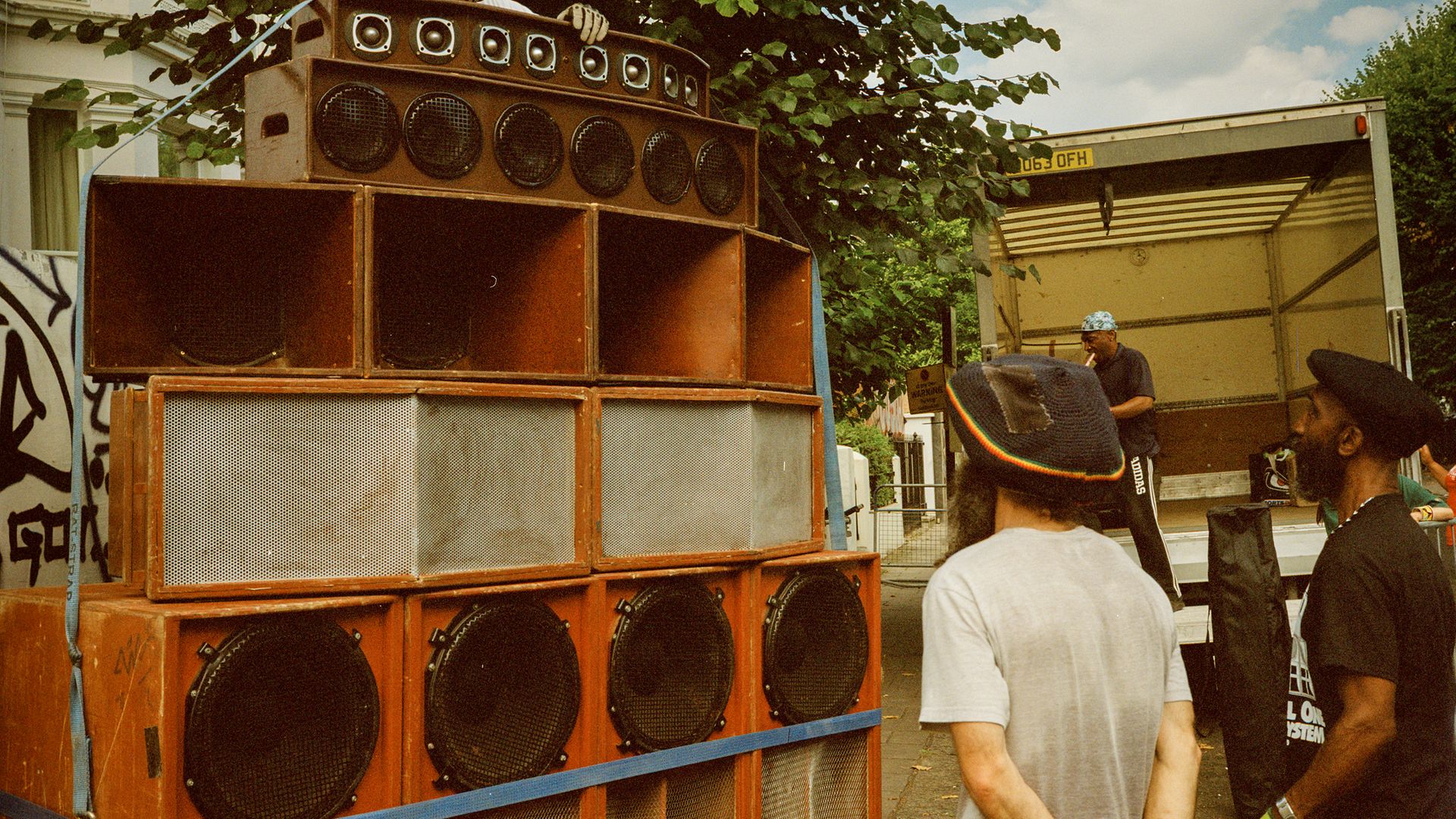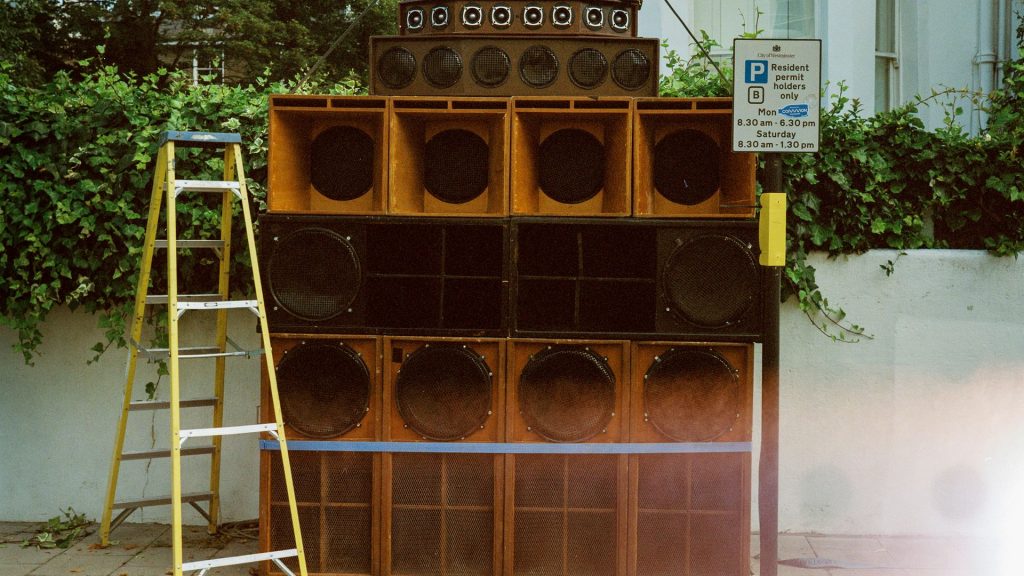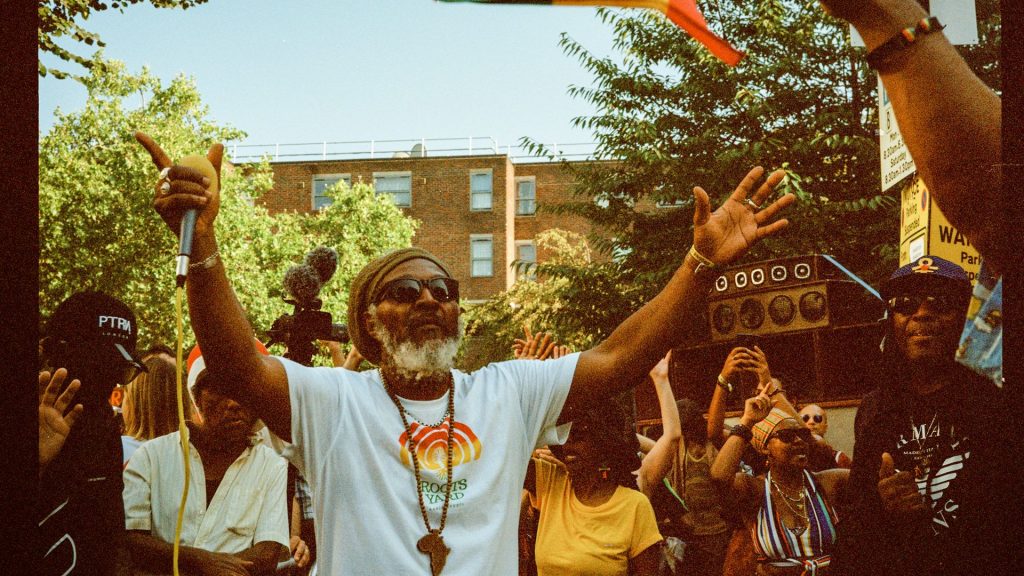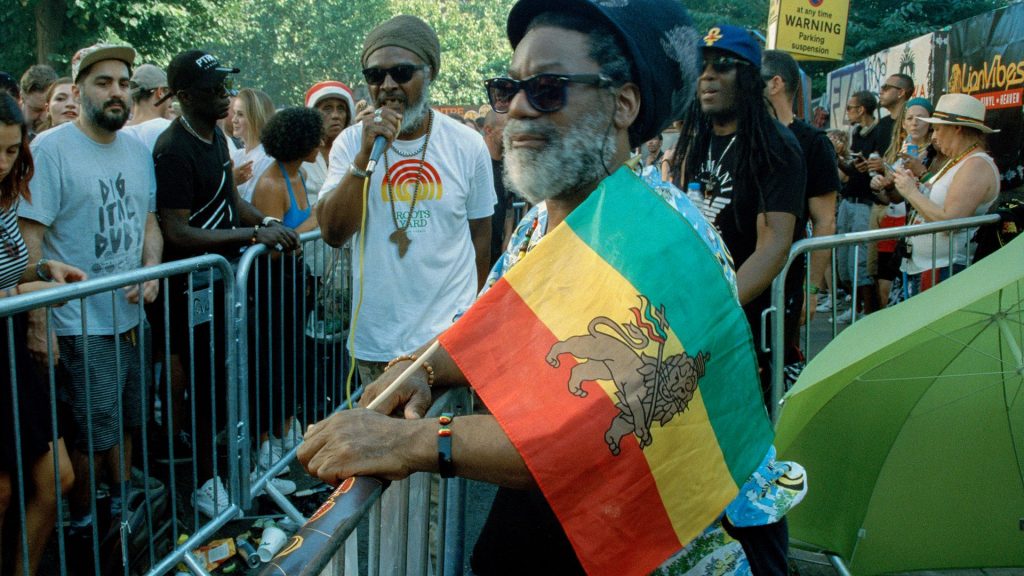
Dub London: Bassline of a City – celebrates the best of dub music.
Wondering what ‘dub’ is? Essentially, it’s a remix of a song with the vocals (and much instrumentation) stripped away while the rhythm is boosted with added reverb and sound effects. In doing so new soundscapes are created.
Dub was first developed in Jamaican recording studios at the start of the 1970s – initially, as a form of sonic recycling (producers’ retooled the A-side to save on coming up with a new song for a 45’s B-side) – dub has since developed into a key facet of contemporary music.
The Clash and Public Image, Massive Attack and Andy Weatherall, all built it into their sound while the DJ/rapper combo who constitute rap and grime’s musical frontline (and the remix culture which pervades dance music) can all be seen as dub descendants.
I’ve enjoyed listening to dub ever since first encountering it as a punk rock loving teenager circa 1980 but my experience of it has largely been through records, the occasional music festival dub tent and all-nighters in Brixton’s Recreation Centre (where Aba Shanti’s sound system would play dub so loud the windows rattled).

Thus I’m very much an outside observer. To provide an insider’s insight into Dub London I asked Chris Lane to join me for a (pre-lockdown) look at the exhibition: as a producer, engineer, musician, dub cutter (mixing and cutting exclusive dubplates for London sound systems) and DJ he knows dub culture inside out.
Lane is a wry, wiry Londoner who, as a teenager, became the first journalist to champion Jamaican music, flying to Kingston aged 17 in 1973 to stay with visionary reggae producer Lee ‘Scratch’ Perry for a month. While there he interviewed artists, soaked up sounds and gained an idea of how Jamaican music was recorded. Upon returning to London, Lane would co-found (with his school friend, John Macgillivray) Dub Vendor – the foremost UK reggae record shop – and Fashion Records, an independent record label focusing on British reggae artists.
Lane’s lifelong engagement with Jamaican music might suggest an outlier but he insists he was just one of thousands of white, working class kids who embraced Jamaican music during the 1960s. Indeed, while its been noted how mods and then skinheads loved dancing to ska most social histories of 1960s era music tend to overlook how the likes of Desmond Dekker, Millie Small, The Pioneers (amongst other Jamaican singers) all scored huge UK hits alongside the Beatles, Stones and co.
Lane attended the 1970 concert of Jamaican music at Wembley Empire Pool where ten thousand teenagers of all races went to see their favourite singers. Why hasn’t this initial race relations breakthrough been given more coverage? Because the major record labels and nascent music press chose to concentrate on white rock artists.
“Most of my mates at school liked Pink Floyd and laughed at my reggae records,” recalls Lane. “I’d play them Bob Marley and they’d say ‘awful’ but once he appeared on The Old Grey Whistle Test (in 1973) they all suddenly declared they liked him. Reggae records were on little independent labels and never got much push, until Island Records focused on marketing Marley as a rock star. And as none of the music papers had anyone writing on reggae I decided I would – while I was still at school.”
I asked Lane when he first became aware of dub as an element of reggae. “In 1970 there were a few dub mixes, mostly released as B-sides (of 45s). At the time no one used the term ‘dub’ for them, they were just ‘versions’ (ie the music with vocals removed) but, of course, you could hear they were different from the normal versions where they would run the backing track with only a couple of lines of the vocal left in. These records had the rhythm track stripped down to the drums and bass, with the guitars and keyboards dropping in and out – a very different sound at the time.

“These proto-dubs obviously didn’t make much of an impact, there were only a few of them and they stopped very quickly. I’ve spoken to engineers who would probably have mixed these tracks about them, and I’ve even asked Jammy (one of pioneering dub remixer King Tubby’s most famous studio engineers who ran a sound system then) but no one had any recollection of them at all. The dub mixes came back in ’72 and people started to pick up on it. The term ‘dub’ really comes from producers cutting ‘dubs’ (one-off acetate discs) for sound systems, sometimes straight from an already mixed down tape, but increasingly from a two or four track tape with a custom mix so that the sound has something unique to play. The idea is that even if a rival sound can play the same tune, you can play a different, more exclusive (and possibly better) version to show your superiority.

“This time it really caught on: the sound systems were playing them, and the more enterprising producers pressed up whole albums of dub mixes, very basic mixes with little or no reverb or delay, they sound very primitive now.
“By 1973, the dubs had become more sophisticated, and I know I wasn’t the only one who was buying records on the strength of the dub mix on the B-side, irrespective of what was on the A-side.”
At the museum, we met Papa Face – a Dub Vendor employee and Fashion recording artist – who is involved in the exhibition. He also runs his own Mafia Black sound system and his role in Dub London ensures it is as ‘authentic’ as can be.
“Reggae record shops are very significant because when people came to London through Windrush, the primary way of finding out what was happening back home was through music,” says Face. “The only other real option was a long-distance phone call, which cost a lot of money, so instead people relied on these records that were coming out to find out what was happening. They (the shops) were a meeting point, a place for social gatherings and a main part of the community back then.”
He’s certainly correct in the importance of reggae record shops filling a role far greater than simply that of retail, serving as community centres, arts spaces and even, on occasion, hubs for political activity and protest.
For a community with little access to mainstream media, reggae became a voice for the people: from the 1960s on, Jamaica produced more records per-head of population than any other nation in the world. Thus, outside of Kingston, London had more reggae record shops than any other city. It was here that pioneering reggae record labels Island, Trojan, Pama, Greensleeves and Fashion all based themselves and the flow of producers/artists between Kingston and London has been constant for decades now.
The show features a selection of photographic portraits of female dub DJs. “Its good that they feature women DJs,” says Lane. “But I’m surprised that they are classed as ‘dub deejays’ – do they only play dub? I’d suggest they were ‘reggae DJs’ – the dub DJ thing was predominantly male. I remember girls being a bit fed up with what some sound systems were playing in the ’70s – I recall speaking to a girl that had just come back from Jamaica and, when I asked her if she went to any sound system dances, she told me that she only went to a couple because they were really boring, saying ‘all they were playing was dub and deejay, no singers… it was horrible’.
“I’ve always thought that one of the reasons for the success of lovers rock was that women wanted something they could relate to better, and that they were tired of the heavy roots and dub reggae.”
Lovers rock (gentle reggae love songs) established itself as the biggest-selling genre of Jamaican music when Janet Kay’s Silly Games reached No. 2 in the UK charts in 1979. Kay’s producer was Dennis Bovell – a London-based reggae musician and sound system operator – and he is featured in the exhibition alongside other top London based dub selectors (the Jamaican term for the DJ who plays/mixes the music at sound systems).
Dub’s heyday – at least commercially – was in the late-1970s/early-80s when many punk and post-punk bands championed it and dub mixes of LPs by reggae artists sold strongly internationally. Dub London doesn’t note how both dub and roots reggae then fell off in popularity as audiences here and in Jamaica embraced dancehall – a deejay (the Jamaican term for the man on the microphone) chatting over rhythms that prefigured rap’s rise.
It also doesn’t note how UK sales of Jamaican records declined sharply in the 1990s as young black Britons embraced rap, dance music and r&b, no longer looking foremost to music from ‘back home’. But if it doesn’t quite chronicle dub’s rise and fall, it does offer a homage of sorts to a golden past.
Dub London: Bassline of a City is due to run at the Museum of London until January 31, 2021. Visit the website to check post-lockdown details









